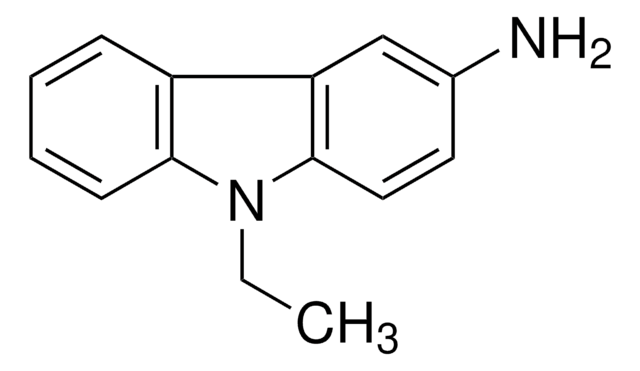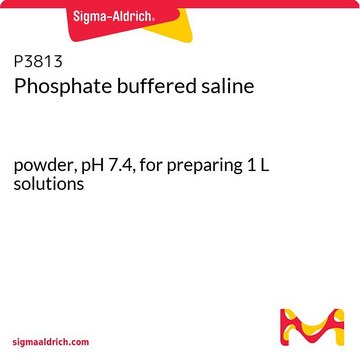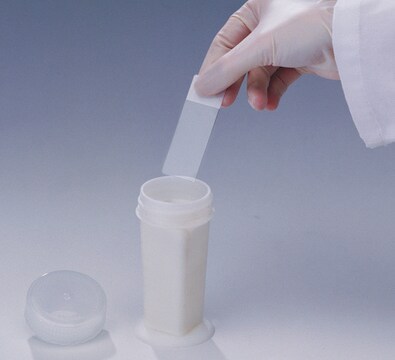AEC101
AEC Staining Kit
liquid
Sinónimos:
ACE substrate kit
About This Item
Productos recomendados
Formulario
liquid
uso
sufficient for ≥1,000 tests (150 ml substrate solution)
temp. de almacenamiento
2-8°C
Aplicación
- for developing the extravidin peroxidase antibody in cell-seeded matrice sections using histology and immunohistochemistry methods
- for streptavidin-horseradish peroxidase in peripheral blood mononuclear cells in ex vivo enzyme-linked immunospot (ELISPOT) assay
- for mouse IgG biotinylated secondary antibody in immunohistostaining of epididymal fat pads
Envase
Precaución
Producto relacionado
Palabra de señalización
Danger
Frases de peligro
Clasificaciones de peligro
Acute Tox. 4 Dermal - Acute Tox. 4 Inhalation - Carc. 1B - Eye Irrit. 2 - Flam. Liq. 3 - Repr. 1B
Código de clase de almacenamiento
3 - Flammable liquids
Clase de riesgo para el agua (WGK)
WGK 3
Punto de inflamabilidad (°F)
134.6 °F - closed cup
Punto de inflamabilidad (°C)
57 °C - closed cup
Elija entre una de las versiones más recientes:
¿Ya tiene este producto?
Encuentre la documentación para los productos que ha comprado recientemente en la Biblioteca de documentos.
Los clientes también vieron
Protocolos
Use this protocol to for the entire immunohistochemistry (IHC) procedure through staining and visualization of specific antigens in paraffin-embedded tissue sections.
Nuestro equipo de científicos tiene experiencia en todas las áreas de investigación: Ciencias de la vida, Ciencia de los materiales, Síntesis química, Cromatografía, Analítica y muchas otras.
Póngase en contacto con el Servicio técnico












